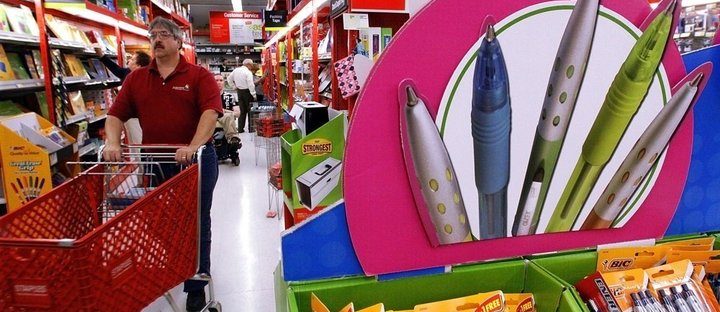I don’t need to rehash what has been going on in Washington. The moves that were made with the most recent agreements, we are told, were made to protect our children and their future. I am more worried about protecting our children of today to make sure we don’t have a lost generation gliding through … Continue reading We Are Forgetting About Our Kids
Interview: Marc Joseph of DollarDays
This week, it’s my great pleasure to post an interview we ran with Marc Joseph, founder and President of DollarDays, and Kevin Ryan, [DollarDays] Vice President and General Merchandise Manager. It would be great if you could share some details about your company’s history, goals and values. DollarDays is celebrating its 10th anniversary this year. It … Continue reading Interview: Marc Joseph of DollarDays
Nonprofits a Loser in All This Mess
Yesterday, July 20, there was an article in The Huffington Post called “Debt Ceiling Standoff Hurts Consumer Confidence.” In The Wall Street Journal today, an article says, “Layoffs Deepen Gloom“ and concludes, “The stepped-up pace of layoffs suggests companies are losing faith in the prospect of a second-half rebound.” Obviously, this is all bad news … Continue reading Nonprofits a Loser in All This Mess
School Supply Giveaway Contest
The Wall Street Journal reported today “For Small Businesses, Recession Isn’t Over.” As a supplier to small businesses of over 140,000 general-merchandise products, we knew the recession wasn’t over months ago, because small businesses are still having trouble getting traffic into their business, [and] those buyers [are spending] less than last year. [O]n top of … Continue reading School Supply Giveaway Contest
64% of Small-business Owners Say Sales Down Due to High Gas Prices
More than 64% of small-business owners polled say revenue is down as a result of increased gas prices, and more than a quarter of those polled say they will have to lay off employees, according to a survey conducted on DollarDays.com. DollarDays, a subsidiary of America's Suppliers, Inc., is a premier Internet-based product wholesaler to … Continue reading 64% of Small-business Owners Say Sales Down Due to High Gas Prices
Buyer Beware
It involved only about 1% of the suppliers on its global online marketplace, but the word from Alibaba.com last month was startling to retailers who pore through its webpages looking for products to buy at wholesale—[m]ore than 2,300 of Alibaba’s supposedly trustworthy China Gold [s]uppliers in 2009 and 2010 engaged in fraud, ringing up on … Continue reading Buyer Beware
DollarDays Introduces SBA-backed Loan Offering to Help Small-business Owners
This month, leading online B2B wholesale distributor DollarDays introduced a partnership with Superior Financial Group to help business owners secure Small Business Administration (SBA) loans. DollarDays is the premier online wholesale and closeout company that helps small businesses [...] compete against chain retailers by offering more than 140,000 high-quality goods at prices close to those at which large enterprises … Continue reading DollarDays Introduces SBA-backed Loan Offering to Help Small-business Owners
The Right Message
The problem started about two years ago, when ShoppersChoice.com LLC began cranking up production of product demonstration videos. The online retailer couldn’t stuff most of the items used for videos back into boxes and sell them as new. When it came to barbecue grills, for instance, cooking on them not only meant they couldn’t be … Continue reading The Right Message
The 1M1M Deal Radar 2010: DollarDays, Scottsdale, Ariz.
DollarDays is an online wholesaler that helps small businesses compete against larger enterprises by offering more than 80,000 high-quality goods at closeout and wholesale prices close to those at which large chains purchase the same merchandise. The Scottsdale-based company was founded by Marc Joseph, who has worked at numerous retail stores, including Federated Department Stores, Crown … Continue reading The 1M1M Deal Radar 2010: DollarDays, Scottsdale, Ariz.
Marc Joseph, Author Interview
What is your most recent book? Tell us a bit about it. My book is The Secrets of Retailing...or How to Beat Walmart. My company is the largest B2B site on the Internet, where we sell over 75,000 general-merchandise products by the case at wholesale and closeout prices to small and medium-sized companies surviving and thriving … Continue reading Marc Joseph, Author Interview

